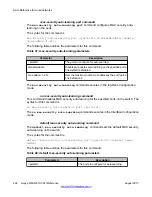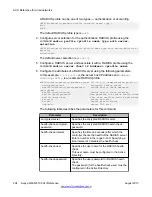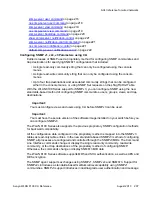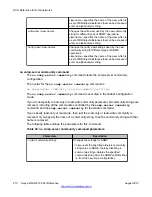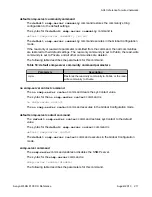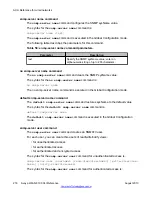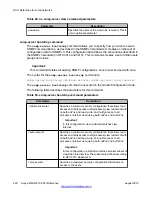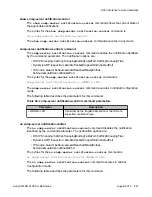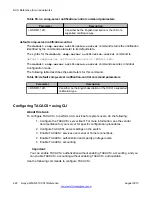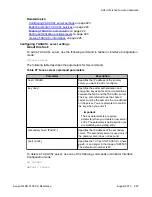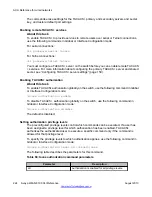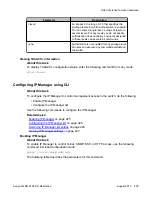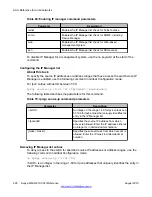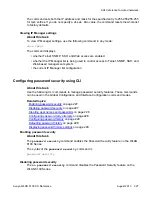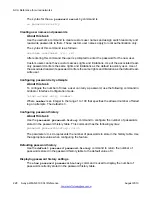
snmp-server name command
The
snmp-server name
command configures the SNMP sysName value.
The syntax for the
snmp-server name
command is:
snmp-server name <text>
The
snmp-server name
command is executed in the Global Configuration mode.
The following table describes the parameters for this command.
Table 58: snmp-server name command parameters
Parameter
Description
text
Specify the SNMP sysName value; enter an
alphanumeric string of up to 255 characters.
no snmp-server name command
The
no snmp-server name
command clears the SNMP sysName value.
The syntax for the
no snmp-server name
command is:
no snmp-server name
The no snmp-server name command is executed in the Global Configuration mode.
default snmp-server name command
The
default snmp-server name
command restores sysName to the default value.
The syntax for the
default snmp-server name
command is:
default snmp-server name
The
default snmp-server name
command is executed in the Global Configuration
mode.
snmp-server user command
The
snmp-server user
command creates an SNMPv3 user.
For each user, you can create three sets of read/write/notify views:
• for unauthenticated access
• for authenticated access
• for authenticated and encrypted access
The syntax for the
snmp-server user
command for unauthenticated access is:
snmp-server user <username> [read-view<view-name>] [write-view<view-
name>] [notify-view<view-name]
The syntax for the
snmp-server user
command for authenticated access is:
ACLI Reference for wired networks
216 Avaya WLAN 8100 CLI Reference
August 2013

